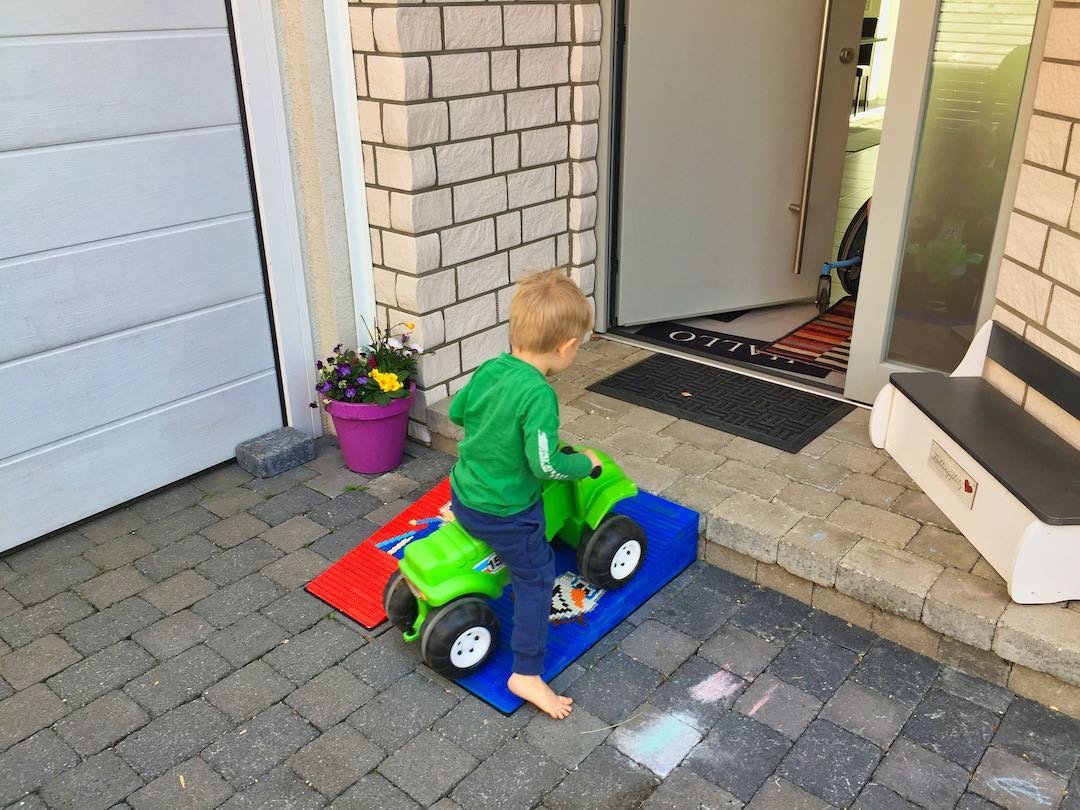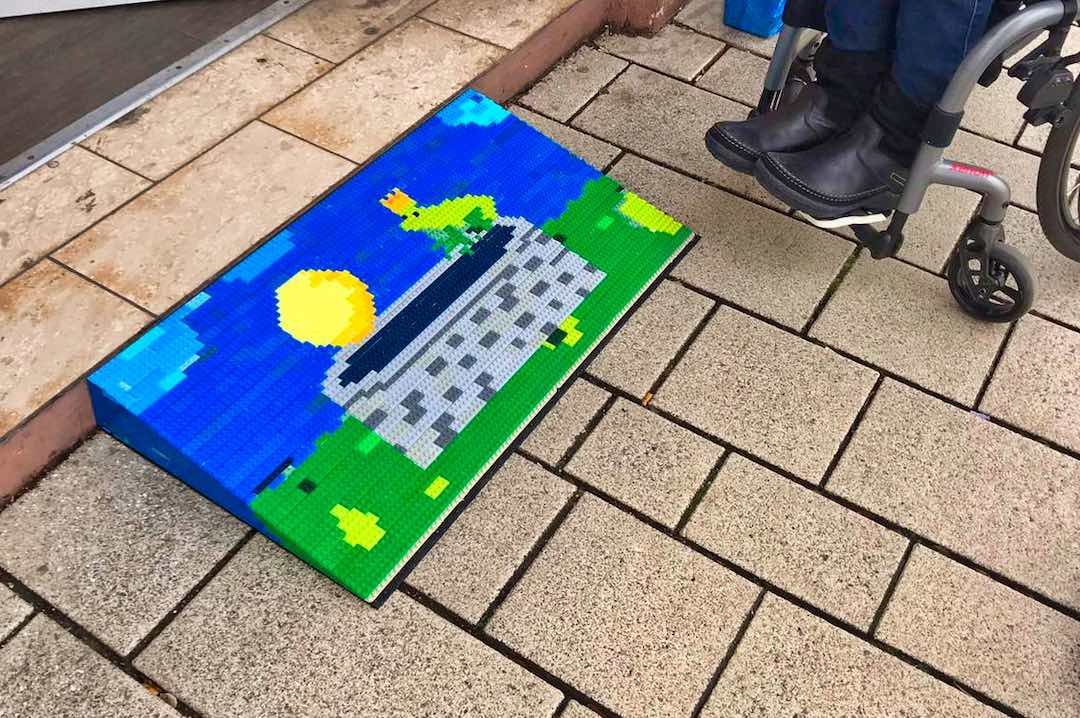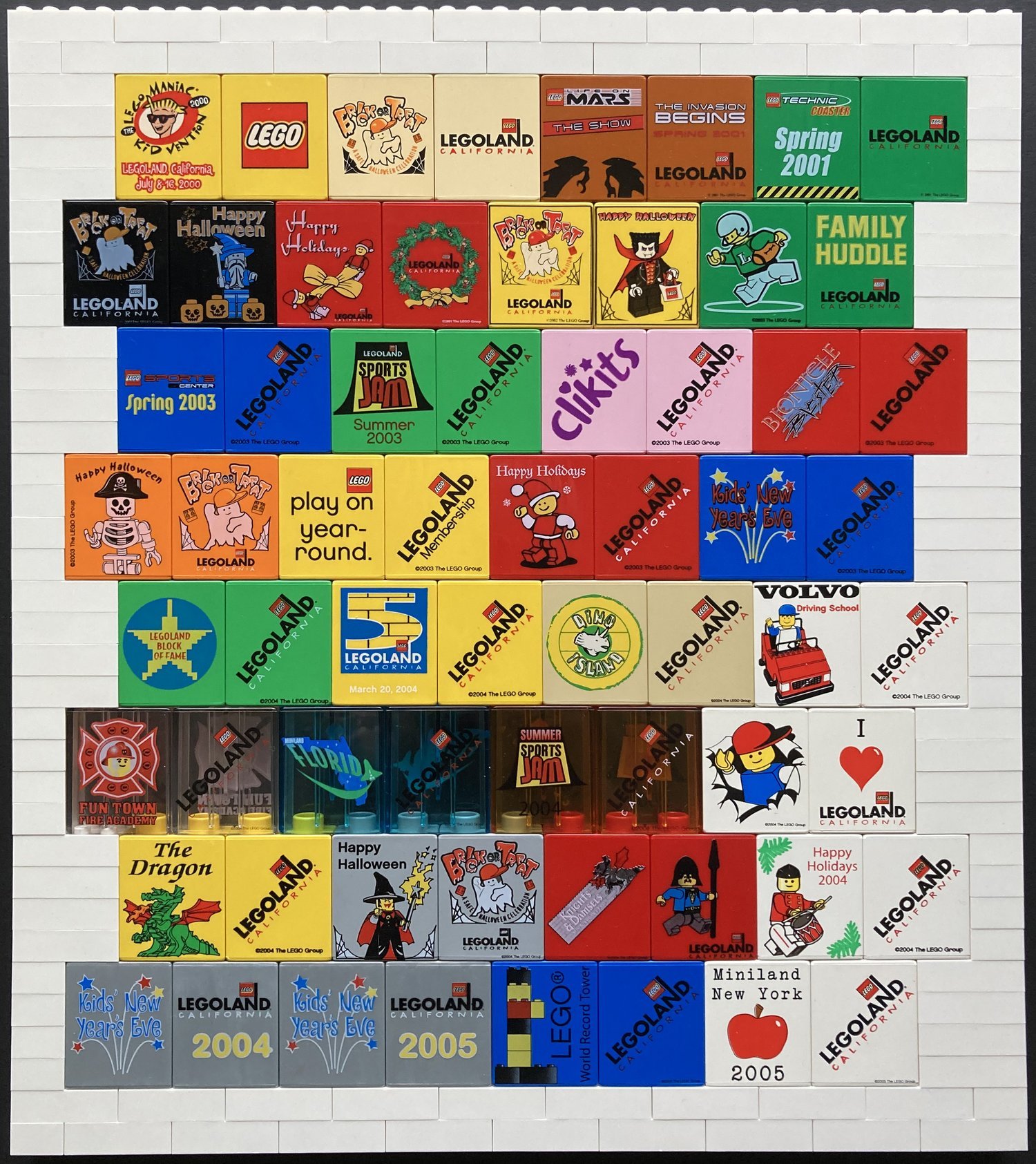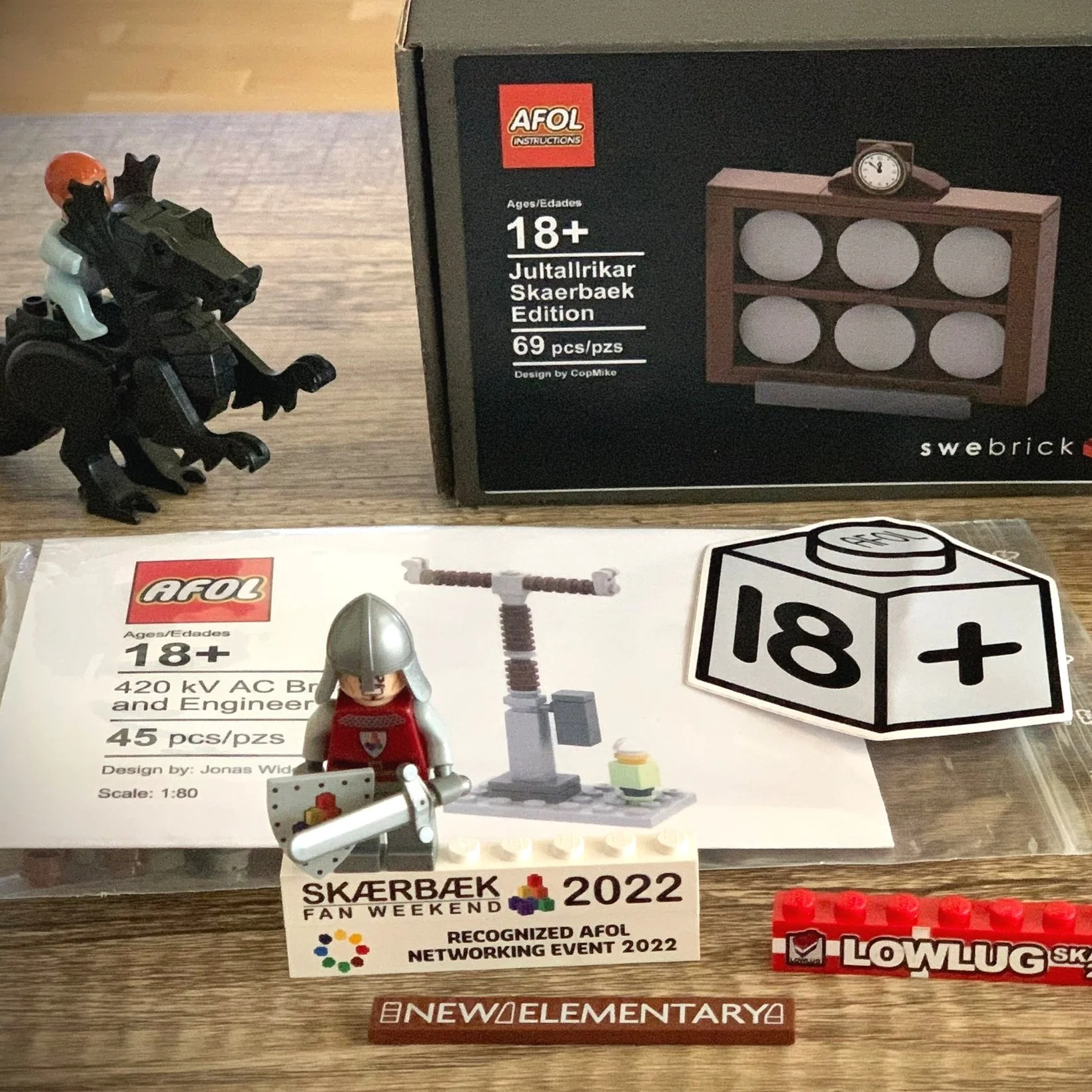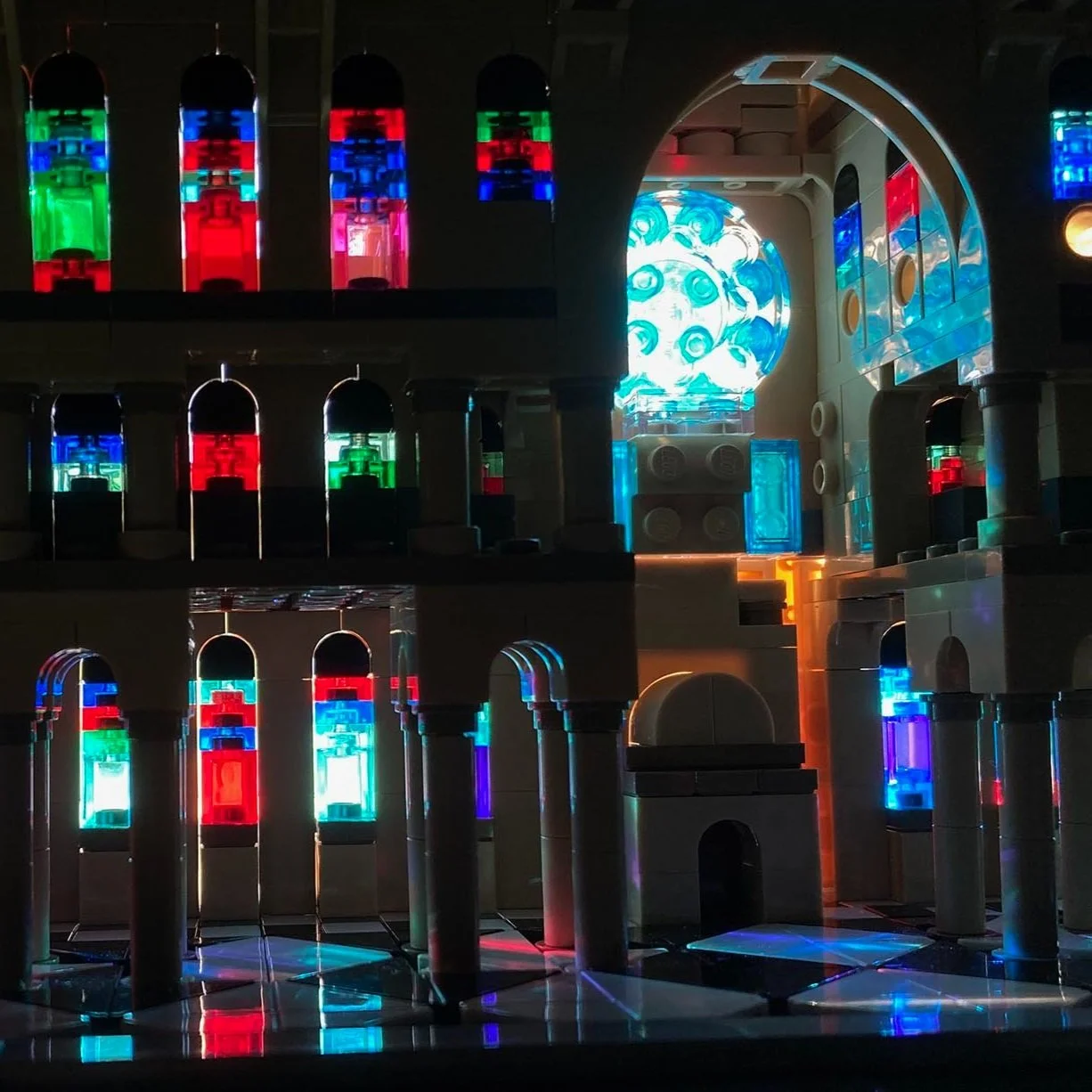The German Grandma Creating LEGO Ramps to Access Buildings and Imagination
/Today’s guest article comes from Karina Sturm to mark Global Accessibility Awareness Day and has been updated and republished with permission from ABILITY Magazine — founding sponsor of abilityJOBS.com, ABILITYJobFair.org and abilityEntertainment.org.
Rita Ebel tries one of the ramps she built for a business in Hanau.
Most Germans have heard of Rita Ebel, better known as the ‘LEGO Oma.’ The 65-year-old lady with the short blonde pixie cut and a Hessian dialect is known all over the world since her wheelchair ramps made entirely from LEGO have become a tourist attraction in the city of Hanau, Germany and beyond. Rita and her colorful ramps have been featured on numerous TV shows, in newspapers, and in the new book “LEGO Heroes”.
Rita spoke with us in German which has been translated about her LEGO ramps, her life as a wheelchair user, accessibility, and the challenges of building more than a dozen ramps with thousands of pieces of LEGO.
Rita Is Quite The Original
She picks up our Skype call with the words, “I really have no idea how to use this thing,” and when I ask her to introduce herself, she accidentally states her last name from a previous marriage. Her husband interrupts and corrects her, and Rita bursts out laughing. “We have only been married for 18 months,” she says [now a few years longer]. “He’s my third husband,” Rita adds and smiles brightly, to which her husband responds, “Hopefully the last one.” With Rita, one doesn’t need to talk much but indeed laugh a lot. She radiates positivity and energy with every word, and to any negative question, Rita has an optimistic response even though her life hasn’t always been easy.
Finding Nemo-themed ramp.
The 65-Year-Old Has Gone Through Rough Patches
31 years ago, Rita was in a car accident and experienced incomplete paralysis, which means that she can walk short distances with crutches but, most of the time, uses a wheelchair. She was married twice and survived cancer. When asked about the tougher times in her past, she states: “There is no situation that is just bad. We all need to find this tiny good part in the negative circumstance ourselves.” Based on her life’s philosophy, of course, Rita wouldn’t let a lack of accessibility stop her in her tracks. Instead of complaining, she decided to take it upon herself to remove some of the barriers for wheelchair users in her hometown, Hanau.
Colorful LEGO ramp with two lanes.
Every ramp has a unique design.
Then It All Began…
Only a few years ago, the quirky grandma became the popular “LEGO Oma” when she started to build LEGO ramps as part of the “Menschen in Hanau” (Humans in Hanau) initiative. She approached the organization after reading an article about Corinna Huber, who invented the LEGO ramps and started building them in Bielefeld. When Rita realized that most German cities still lack accessibility, with her hometown Hanau not being an exception, Rita contacted Corinna, received the instructions, and planned to build her first ramp.
The Start Was Tricky
At first, business owners didn’t understand the significance of Rita’s project. “The owners of the shops would always tell me that I could simply knock on the door, and then they will help me to get in. They thought this wasn’t a problem. However, if you are an active wheelchair user who is used to being independent, you aren’t going to stop in front of their door, knock, and ask for help.” It’s often hard to comprehend for non-disabled people why being carried up a tiny stair isn’t the same thing as entering and exiting a shop whenever you want – just like any other person is allowed to do. However, Rita’s explanations and, moreover, her persistence, changed the hearts and minds of many people in Hanau.
Rita’s very first custom-built ramp for the ‘“Hanauer Anzeiger”.
How To Get 7 kg of LEGO For Each Wheelchair Ramp?
Right after Rita initiated the LEGO project in Hanau, another challenge arose. Where does she find thousands of LEGO pieces to build her first ramp? “Getting the LEGO is actually the hardest part. People who have LEGO at home usually don’t want to give them up because it’s something that lasts through all generations. Additionally, LEGO has gotten quite expensive. And if I do get LEGO, the pieces are often not suitable for my ramps because I need the basic building blocks, but these days most of the LEGO belong to a LEGO Friends or Star Wars set,” Rita says.
Every Piece Counts
Rita started to create social media channels and asked for LEGO donations. An online seller saw one of her many social initiatives and wanted to help. “He asked how many pieces of LEGO I would need to finish my very first ramp. I responded that I was afraid I might need around 1,000 LEGO to begin with. Shortly after, he came to me with two huge boxes filled with LEGO,” Rita remembers. And finally, she could build her first ramp.
“I Can’t Have Enough Bricks.”
How many LEGO pieces Rita needs to complete a ramp depends on the height of the step the ramp has to overcome. “For a 15 cm stair, we need a two-lane ramp which means around 8 kg of LEGO.” It takes Rita only three to four hours to finish one of these lanes. Her husband builds the bottom part, and she takes care of the surface. Rita says the most pressing issue is that she just doesn’t have enough room to store all the LEGO. Luckily, many people want to support her work, and therefore, her landlord offered her an additional basement room only for her LEGO.
5-Year-Old Mona Receives Her LEGO Ramp
On June 25, 2019, the time finally came, and Rita delivered her very first LEGO ramp to the proud recipient, a local newspaper called the “Hanauer Anzeiger.” Only ten months later, the busy Hessian had built a total of 20 ramps!
Rita tests her first ramp.
The local newspaper is happy with its new ramp.
One of her latest projects was at the same time the most impactful for a little girl: Mona. Mona is a bright 5-year-old who lives with a rare condition called hereditary spastic paraplegia (HSP), an illness that leads to progressive weakness and spasticity of the legs.
“As soon as Mona started walking, it was obvious that something is wrong. She was always very unsteady and constantly fell,” Mona’s dad, Fabian, says. “Her doctors would tell us we shouldn’t be too worried because she is still young and would catch up to other children her age soon. Nevertheless, we always had this feeling she might not, and ultimately, it was confirmed,” Christina, Mona’s mother, adds.
When Mona grew out of her stroller, the family decided a wheelchair would be a better option to allow Mona to move around independently. “We wanted to give Mona the legitimacy she deserved and needed. Sitting in her stroller, people didn’t know that Mona lives with a chronic condition. They would ask why such an old child still needs a stroller. We felt a wheelchair gives Mona more independence and also shows that she has a disability and that that’s absolutely OK,” Christina explains. And Mona is very happy with her wheelchair.
Now, only one barrier was left: a small stair at the main entrance. Christina and Fabian agreed that the regular ramps covered by their insurance would suffice, but aren’t too fun or special for a small child. Remembering Rita from articles the family read, they decided to build their own ramp with LEGO Duplo. And… they failed.
Elsa and Olav
Christina called Rita, who immediately had an idea: She could use the LEGO pieces that had been collected for her projects by childcare facilities in Hanau for Mona’s ramp. Mona’s parents initiated additional donations in their hometown, Lünen, and soon after, an excited Mona and her crying mom placed the Frozen-themed ramp, which features Elsa, the ice queen, and Olaf, her cute companion snowman, in front of the entrance stair.
Mona’s ramp features Elsa and Olaf.
Rita personally delivered the ramp to the family who lives 2.5 hours away to make sure the ramp has the correct height and size, and of course, it perfectly fit. “Rita and Mona had an instant connection. Mona baked a cake for Rita, and they both tried out the ramp multiple times together,” Christina says. “Mona is so proud of her new ramp because everyone who sees it tells her how cool it looks,” Fabian adds.
Mona loves her new ‘Frozen’-themed ramp.
And the whole project had a significant side effect too: Rita and Mona have raised awareness for varying disabilities, and therefore, Mona’s kindergarten discusses disabilities and specifically the use of a wheelchair more with the other children, which makes Mona feel included.
The Sweets Shop
Rita’s creativity doesn’t have any limits. She always comes up with a new idea, and now people from all over Germany contact her to get one of her masterpieces.
The perfect ramp for a sweets shop in Hanau: gummy bears
“In Hanau, we have this amazing sweets store, and I have always thought to myself, ‘I wish there wasn’t this annoying stair.’ On Valentine’s Day, I stood in front of the large shop window, wanting to buy some sweets for my husband when the owner approached me and told me she was happy to help me in,” Rita explained, “I said that if she had a ramp, I would come much more often.”
The business owner excitedly told Rita about this woman she had seen in the press who builds LEGO ramps for Hanau’s businesses and that she really needed to get in touch with her. Rita smiled. A few months later, the gummy bear store was embellished with a two-part ramp with a large red bear and a yellow bear on the top of the ramp.
Every Ramp Is A Piece Of Art
Rita’s ramps are rarely just colorful. Almost all of them show a motif reflecting the history of the specific spot they are placed in. “A young mother who volunteers for me and sorts the LEGO pieces by size had the idea we could include fairy tale figures into our ramps since Hanau is known for the popular fairy tale authors The Brothers Grimm.“ They created a variety of different fairy tale designs; for example, one of her ramps is placed in front of a hair stylist’s entrance and shows the Frog Prince sitting on the edge of a well with a golden pearl.
The Frog Prince sitting on the edge of a well with a golden pearl
Today, Rita’s wheelchair ramps are a tourist attraction. Rita was told that some people only visit certain businesses in Hanau to get a glimpse of her creative work. “Teenangers lie next to ramps and take pictures for Instagram,” she says.
Not Only Wheelchair Users Benefit From These Ramps
Yes, the ramps make businesses accessible for people using wheelchairs. But they also support mothers pushing strollers, or people using assistive devices to walk. Another positive effect of Rita’s colorful design is that people with visual impairments can see the ramps from a distance and therefore know there is a stair.
The LEGO Ramps Aren’t Classified As Official Wheelchair Ramps
According to Rita, her ramps can’t be officially classified as wheelchair ramps in Germany because laws only allow a six percent inclination. “This would mean that if the ramp has to overcome a 15-centimeter step, it could be a few meters long, and that’s often not possible because the sidewalk doesn’t offer enough space. So our ramps don’t qualify as wheelchair ramps, but all city officials support our work and don’t complain.”
It is a balancing act between what Rita is allowed to do versus what the businesses need in order to be accessible to everyone. “But in the end, the wheelchair users don’t care much about regulations if the ramp allows them to independently enter and exit the shop,” Rita adds.
A “Hingucker”
Rita calls her ramps a “Hingucker,” the German translation of an eye-catcher. However, in fact, they are much more than that. “They get the people to actually think about accessibility,” she says. Due to the uniqueness of every single ramp, people don’t simply walk by. They stop, take a picture, and start reflecting on the importance of Rita’s work. Rita’s ramps overcome stairs and therefore allow wheelchair users to independently move around, but more importantly, they also challenge non-disabled people to think about accessibility and conquer misconceptions.
One Ramp At A Time
At the time of this interview, Rita finished her 20th ramp, which has been requested by a law office with the ‘strict condition’ that Rita reaches into the LEGO box without paying attention to any color scheme. And the grandma isn’t afraid of challenges either. Ramp number 21 will, for the first time, cover the height of two stairs. And this is just the beginning. Rita has no intention to stop making Germany a little bit more accessible – one ramp at a time.
All pictures via Rita Ebel aka “die LEOG Oma.”
Do you have a place where one of these ramps might be handy? What other problems could be solved with LEGO? Let us know in the comments below.
Do you want to help BrickNerd continue publishing articles like this one? Become a top patron like Charlie Stephens, Marc & Liz Puleo, Paige Mueller, Rob Klingberg from Brickstuff, John & Joshua Hanlon from Beyond the Brick, Megan Lum, Andy Price, John A., Lukas Kurth from StoneWars, and Wayne Tyler to show your support, get early access, exclusive swag and more.





